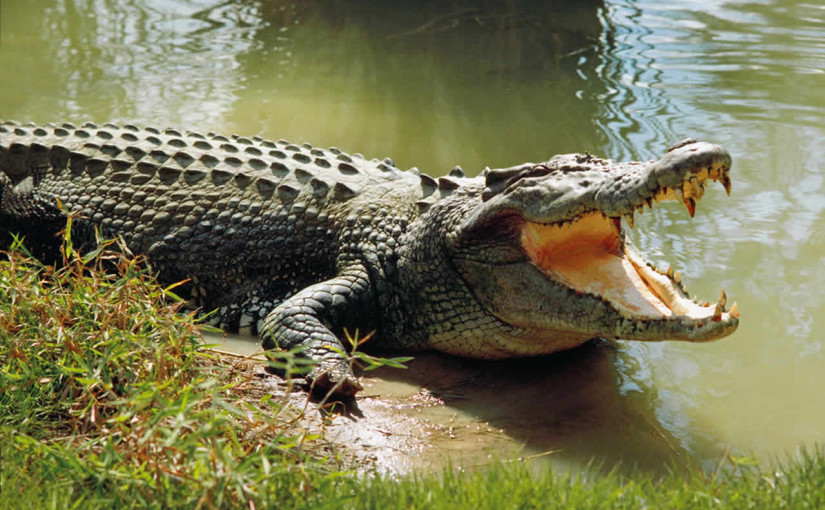The crocodile population in Odisha’s Bhitarkanika National Park and Satkosia sanctuary has experienced a notable increase, according to the latest census. In the Bhitarkanika National Park, located in Kendrapada district, the count of saltwater or estuarine crocodiles has risen to 1,811 this year from 1,793 last year. The Forest department organized 22 teams across 51 segments to conduct the annual census, covering all creeks and rivers within the park and its vicinity. The census, carried out from January 10 to 12, strategically coincided with the peak winter season, exposing over 50 percent of mud banks and aligning with the lunar cycle, enhancing the accuracy of the count. Sudarshan Gopinath Yadav, the divisional forest officer of Bhitarkanika National Park, highlighted the significance of these factors in ensuring a comprehensive headcount.
Bhitarkanika, the second-largest mangrove forest in India after the Sundarbans in West Bengal, stands as one of the three strongholds for saltwater crocodiles in the country, the others being the Sundarbans and the Andaman and Nicobar Islands. The census, supervised by wildlife personnel, involved enumerators supported by trained local forest staff and herpetologists, including renowned crocodile researcher Sudhakar Kar. The teams covered the entire Bhitarkanika river system, exploring numerous creeks, water inlets, and nullahs.
During the census, the teams observed a diverse age distribution among the crocodiles, with 582 hatchlings (two feet in length), 387 yearlings (2-3 feet), 327 juveniles (3-6 feet), 167 sub-adults (6-8 feet long), and 348 adults (over 8 feet long), providing valuable insights into the population dynamics. Beyond Bhitarkanika, Satkosia has also reported an increase in crocodile numbers. According to information shared by Satkosia DFO Saroj Kumar Panda, the mugger crocodile population has risen from 81 to 97, while the gharial population has increased from seven to 14 in the gorge sanctuary. These findings underscore positive trends in crocodile conservation efforts in these significant habitats.
The crocodile population in Odisha’s Bhitarkanika National Park and Satkosia sanctuary has experienced a notable increase, according to the latest census. In the Bhitarkanika National Park, located in Kendrapada district, the count of saltwater or estuarine crocodiles has risen to 1,811 this year from 1,793 last year. The Forest department organized 22 teams across 51 segments to conduct the annual census, covering all creeks and rivers within the park and its vicinity. The census, carried out from January 10 to 12, strategically coincided with the peak winter season, exposing over 50 percent of mud banks and aligning with the lunar cycle, enhancing the accuracy of the count. Sudarshan Gopinath Yadav, the divisional forest officer of Bhitarkanika National Park, highlighted the significance of these factors in ensuring a comprehensive headcount.
Bhitarkanika, the second-largest mangrove forest in India after the Sundarbans in West Bengal, stands as one of the three strongholds for saltwater crocodiles in the country, the others being the Sundarbans and the Andaman and Nicobar Islands. The census, supervised by wildlife personnel, involved enumerators supported by trained local forest staff and herpetologists, including renowned crocodile researcher Sudhakar Kar. The teams covered the entire Bhitarkanika river system, exploring numerous creeks, water inlets, and nullahs.
During the census, the teams observed a diverse age distribution among the crocodiles, with 582 hatchlings (two feet in length), 387 yearlings (2-3 feet), 327 juveniles (3-6 feet), 167 sub-adults (6-8 feet long), and 348 adults (over 8 feet long), providing valuable insights into the population dynamics. Beyond Bhitarkanika, Satkosia has also reported an increase in crocodile numbers. According to information shared by Satkosia DFO Saroj Kumar Panda, the mugger crocodile population has risen from 81 to 97, while the gharial population has increased from seven to 14 in the gorge sanctuary. These findings underscore positive trends in crocodile conservation efforts in these significant habitats.





